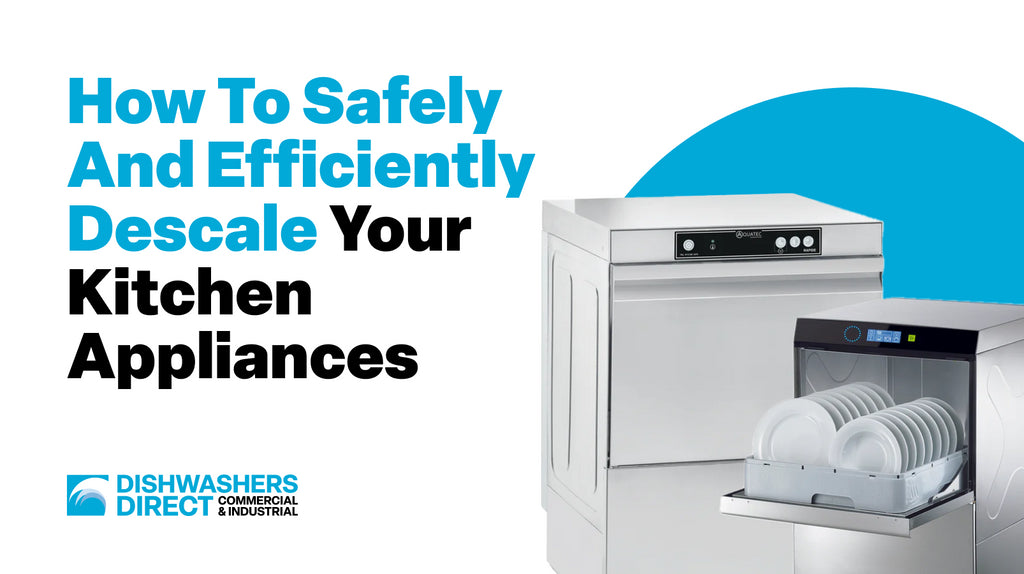How To Safely and Efficiently Descale Your Kitchen Appliances
Posted by SAMUEL DEAKIN

Limescale is one of the most common issues in commercial kitchens located in areas with hard water. Hard water contains dissolved calcium and magnesium minerals which are then deposited on to appliances they come into contact with and subsequently harden – this is what we refer to when talking about limescale.
The build-up of minerals will lead to decreased efficiency of equipment and increased energy costs. In addition to affecting your machines, hard water can also damage clothes, etch glass, bind with detergents causing odours, and cause chalky residue or spots to appear on dishes.
Regular descaling is essential to prevent these issues, ensuring your kitchen appliances function optimally and maintain their lifespan.
Why Descaling Your Appliance Is Important
Limescale deposits develop when water evaporates, leaving behind mineral residues that accumulate on internal surfaces.
These build-ups pose several risks:
• Reduced Efficiency: Limescale acts as an insulator, reducing the ability of heating elements to transfer heat efficiently. Appliances like kettle and dishwashers must work harder, leading to increased energy consumption.
• Clogging of Components: Limescale can block water flow in appliances such as coffee machines and steam ovens, leading to malfunctions or uneven performance.
• Increased Maintenance Costs: Appliances that are not descaled regularly require more frequent repairs or may need premature replacement due to irreversible damage.
• Health and Hygiene Concerns: Limescale build up can encourage bacterial growth, especially in appliances that deal with food and beverage preparation.
Descaling Commercial Dishwashers
Limescale build up can obstruct spray arms, affecting heating elements and cause dishes to appear spotty or streaked.
To descale:
• Remove all dishes
• Place a bowl with two cups of white vinegar on the top rack
• Run a hot water cycle without detergent
• For heavy limescale build up, use a commercial dishwasher descaler
This should be done every 1 to 2 months.
Descaling Best Practices
1. Choose the right descaling solution
White Vinegar: A natural and effective solution for kettles, coffee machines, and dishwashers.
Citric Acid: A milder alternative that is effective for coffee machines and steam ovens.
Commercial Descalers: Specialised formulas that remove limescale without damaging sensitive components.
2. Follow manufacturer’s instructions
Always check the appliance manual before descaling, some machines require specific descaling methods or solutions.
3. Rinse thoroughly
After descaling, run several cycles of fresh water to ensure no residual chemicals remain.
4. Prevent limescale build up with a water softener
Descaling is necessary but prevention is even better. A water softener removes excess minerals from your water supply, significantly reducing limescale buildups.
Using A Water Softener
A water softener works by removing the calcium and magnesium ions responsible for hard water and replacing them with sodium or potassium ions. This is done through a process called ion exchange.
Whilst the initial cost for a water softener may be high, the money you save in the long term will make it worth it. From reduced energy bills, less spending on detergent, less repair call outs and maintenance costs, it’s hard to argue against making that investment.
If your kitchen is located in a hard water area, a water softener will make a noticeable difference in both performance and long-term savings.
💡 For more information about the benefits of using a water softener in partnership with your commercial dishwasher, read our blog on the topic here.
💧 Explore our range of water softeners available here.